2023.08.01.67
Files > Volume 8 > Vol 8 No 1 2023
Enas Jalil Baqer Almayali1* , Israa Abdul Ameer Al-Kraety2 , Ahmed Maki Naji3 and Liqaa Hassan Abd almunaam4
1,2 Department of Medical Laboratory Technique, Faculty of Medical and Health Technique, University of Alkafeel. Najaf, Iraq
3 Iraqi Ministry of Health/Al-Najaf Health Directora
4 College of science/ Chemistry department
* Correspondence: [email protected]
Available from: http://dx.doi.org/10.21931/RB/2023.08.01.67
ABSTRACT
Otitis media is an acute upper respiratory tract infection-related inflammation of the middle ear and tympanic membrane, frequently affecting children. Typically, a subsequent bacterial infection complicates a viral infection, which ultimately causes the condition. The study aims to study the function of bacterial ear infections and its causes, as well as their resistance to medications, which was the focus of this investigation. The first axis of the research was the identification of bacterial isolates using recognized diagnostic tools, and the second axis was determining the antibiotic's resistance and sensitivity. Patients with otitis media were gathered from Al-Hakim General Hospital and Al-Sadr city hospital in Al-Najaf city between November 2020 and April 2021 for 100 clinical samples. More than 80 samples were found to be infected with bacteria. Bacterial strains found in this investigation are ( 30 ) isolates of Pseudomonas aeruginosa, (20) isolates of Klebsiella spp, (20) isolates of Proteus spp, ( 15 ) isolates of Staphylococcus aureus, (8) isolates Escherichia coli and (7) isolates Enterococcus fecalies. As part of this research, the disk diffusion method was used to assess how sensitive the test was. The results showed that Pseudomonas aeruginosa was resistant to most antibiotics, particularly the penicillin family, cephalosporin, and trimethoprim, with the existence of isolates resistant to meropenem. The investigation results varied for the quinolone, aminoglycoside, and macrolide families. Klebsiella spp. were tested for antibiotic sensitivity and found to be resistant to most antibiotics, particularly those in the penicillin family, cephalosporins, and trimethoprim. Some quinolones, aminoglycosides, and macrolides are also resistant. Proteus spp were resistant to most antibiotics, particularly the penicillin family (except for augmentin, which had some sensitive isolates) and cephalosporin (except for cefdinir and cefepime) had some susceptible isolates) and trimethoprim, in addition to the presence of isolates resistant to meropenem. There is a discrepancy in the examination results for the quinolone family. The aminoglycoside family is also highly resistant. S. aureus isolates were resistant to penicillin (except for augmentin, which some isolates were responsive to), trimethoprim, and quinolones, with the presence of isolates resistant to vancomycin. The macrolide class ( azithromycin) also has a significant resistance level. Escherichia coli is susceptible to meropenem, imipenem, and certain cephalosporin generations. Augmentin, cefepime, cephalothin, meropenem, imipenem, and azithromycin were ineffective against Enterococcus fecal. The conclusion is that Pseudomonas spp has a role in ear infections and the germs Klebsiella spp., Proteus spp., Staphylococcus aureus, Escherichia coli, and Enterococcus fecalies. Penicillin and cephalosporin resistance was seen in the majority of the identified isolates. The existence of isolates of Proteus and Pseudomonas species resistant to meropenem. Vancomycin-resistant strains of Staphylococcus aureus isolates are present.
Keywords: Otitis media, Resistance antibiotic, S.aureus, P.aerginosa
INTRODUCTION
Otitis Media (OM) is an inflammatory condition that affects the aperture in the middle ear, whether or not the tympanic membrane is healthy. The complex etiology and pathophysiology of otitis media include genetics, infections, allergies, the environment, social and racial factors, and eustachian tube dysfunction1. Acute and chronic otitis media are equally prevalent conditions. Otitis media affects around 16 percent of the Nepalese population over five. Nearly two-thirds of these incidents involve elementary or middle school-aged children, most of whom originate from low-income households; the spread of antibiotic-resistant bacteria was a worldwide public health problem because OM, its etiological negotiators, and its antibiotic susceptibility array were found early on2. Among the most frequent bacteria found in the middle ear of patients with AOM, you'll discover S. pneumoniae, H. influenzae, M. catarrhalis, and S. aureus 3. Ear discomfort is the most common symptom of acute otitis media; additional symptoms include fever and decreased hearing during sickness, the skin above the ear inflamed, ears dripping with pus, the patient being irritable, and diarrhea (in infants). Because an upper respiratory tract infection (URTI) generally precedes an episode of otitis media, symptoms such as a cough and nasal discharge are familiar. A sensation of fullness in the ear is also possible. Ear discharge can be caused by perforation of the eardrum in acute otitis media, tympanostomy tube otorrhea, and acute otitis externa 4. Thus, this research aims to identify the bacteria that cause the disease and determine their susceptibility to medications.
MATERIALS AND METHODS
Specimens' collection
Patients suffering from otitis media at Al-Hakim General Hospital and Al-Sadder Medical City in the governorate of Al-Najaf gave 100 clinical specimens from November 2020 to April 2021. Using a sample of an ear infection
Specimens Culture and biochemical test. After collecting the samples using swabs, they were cultured on the commonly used media (Nutrient, Mannitol salt, Blood, and MacConkey ) based on isolation and initial diagnosis. And then adopting the biochemical tests from them, IMVIC test, catalase test, coagulase and oxidase, to differentiate between genus and species. In addition to using VITEK-2 Compact System to confirm the diagnosis5,6.
Identification Using VITEK-2 Compact System. These two kinds of bacteria are identified using GP and GN cards, made up of pure colonies taken from the culture medium and suspended in a solution before being loaded onto a card. It relies on biochemical testing for this method 7.
Antimicrobial Activity. The antibiotic sensitivity test is done by using different types and many antibiotic disks with known concentrations on Muller Hinton medium, reading the result after 24 hours, and determining the diameter of the inhibition zone by comparing the result with CLSI 8.
RESULTS AND DISCUSSION
Isolation of pathogenic bacteria and sensitivity test.
One hundred clinical specimens were gathered from patients over the trial period from November 2020 to April 2021. Swabs from the ears. The results showed 80 (80%) samples that contained bacterial growth with 100 isolates because mix growth, while 20 (20%) samples had no bacterial growth, as shown in table (1).
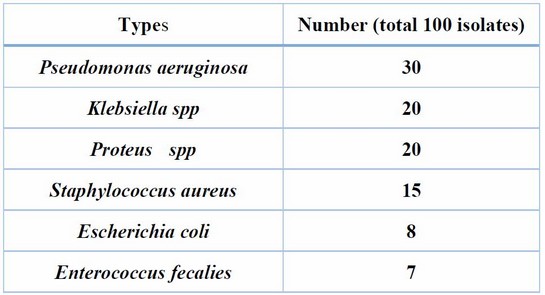
Table 1. Illustrates the different kinds and numbers of otitis media-specific bacteria
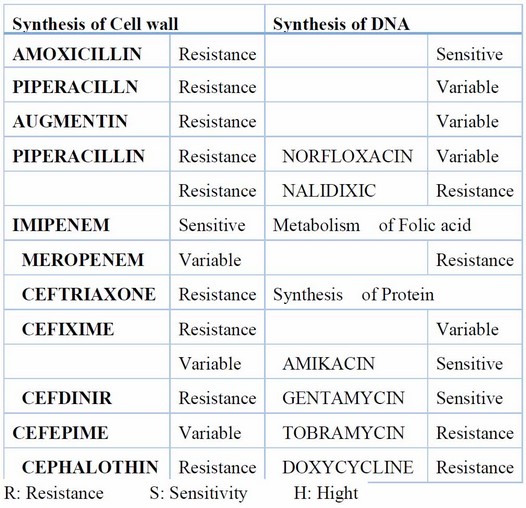
Table 2. Susceptibility test to Pseudomonas aeruginosa isolated from otitis media
This study was conducted on isolates of Pseudomonas aeruginosa isolated from middle ear infections to test for sensitivity consistent with9 they were resistant to most antibiotics, especially the penicillin family, cephalosporin, and trimethoprim, in addition to the presence of isolates resistant to meropenem. There is a difference in the examination results for the families of quinolones, aminoglycosides, and macrolides, as shown in table (2). The transposons present in Pseudomonas aeruginosa modify aminoglycoside enzymes to produce resistance. Infections brought on by microorganisms are treated using a variety of classes/groups of aminoglycoside antibiotics. Examples of antibiotics include gentamicin, streptomycin, amikacin, neomycin, kanamycin, and gentamicin. Three different types of enzyme conformational alterations that result in drug resistance have been identified by prior research. One of these is aminoglycoside phosphoryl transferase (APH) phosphorylation. Because of lipopolysaccharide, a variety of exocompounds are impermeable to Gram-negative bacteria. These include aminoglycoside nucleotidyl transferase (ANT) adenylation and aminoglycoside acetyltransferase (AAC) acetylation (LPS). Each component of LPS has a covalent bond, including the lipid A, oligosaccharide core, and O antigen. LPS adheres to cell membranes with the help of the phosphorylated glucosamine disaccharide in the hydrophobic lipid A region. The outer membrane channel-forming protein (OMC), the resistance nodulation division (RND), and the membrane fusion protein, which joins the first two proteins through the periplasm, comprise the drug efflux system in bacteria10.
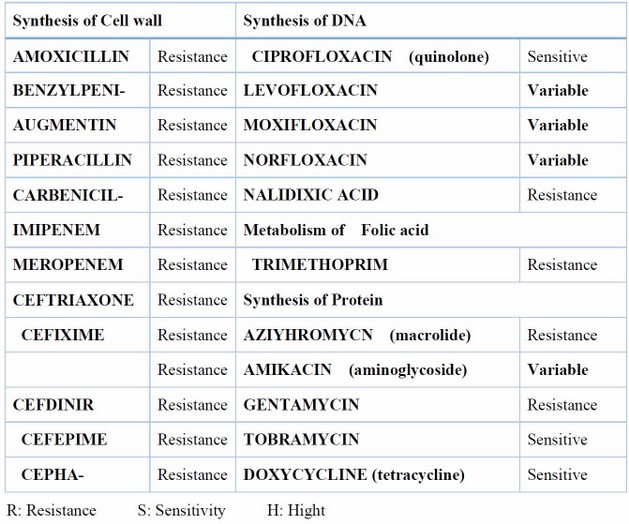
Table 3. Susceptibility test to Klebsiella spp. Isolated from otitis media
During this study, which was conducted on isolates of Klebsiella spp. isolated from middle ear infections to test for sensitivity, they were resistant to most antibiotics, especially the penicillin family, cephalosporin, and trimethoprim. Some types of quinolone, aminoglycosides, and macrolides also give resistance, as shown in table (3).
Pneumonia is brought on by the bacterium K. pneumoniae. Infections that are not resistant to medication can be treated with antibiotics. Because few medicines are effective against K. pneumoniae infections, they might be challenging to treat. Testing in a microbiology laboratory is necessary to ascertain which antibiotics will be beneficial in treating the disease in such situations. Treatments for Klebsiella pneumonia that are more specific include imipenem/cilastatin, quinolones, and aztreonam. To treat multidrug-resistant urinary tract infections brought on by Klebsiella species, amikacin and meropenem have been recommended11.
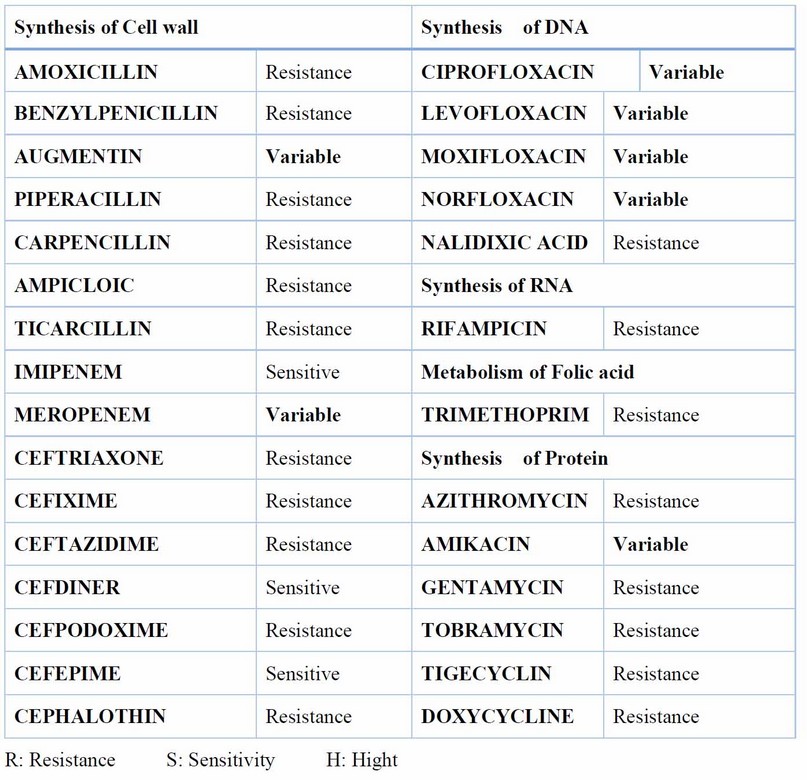
Table 4. susceptibility test to Proteus spp isolated from otitis media
During this study, which was conducted on isolated Proteus spp isolated from middle ear infections to test for sensitivity, they were resistant to most antibiotics, especially the penicillin family (except for augmentin, some isolates were sensitive) and cephalosporin (except for cefdinir and cefepime were sensitive) and trimethoprim in addition to the presence of isolates resistant to meropenem this result agree with12, table 4 displays the resistance rates for the carbapenem community, which comprises imipenem and meropenem (effective -lactam antibiotics), at 5.9 %. There is a discrepancy in the testing results for the quinolone family. The aminoglycoside family also has a significant level of resistance. Extended-spectrum -lactamases (ESBLs), the AmpC-type cephalosporins, and infrequently carbapenemases, are produced by multidrug-resistant (MDR) strains of P. mirabilis, and their frequency in some contexts is instead high13.
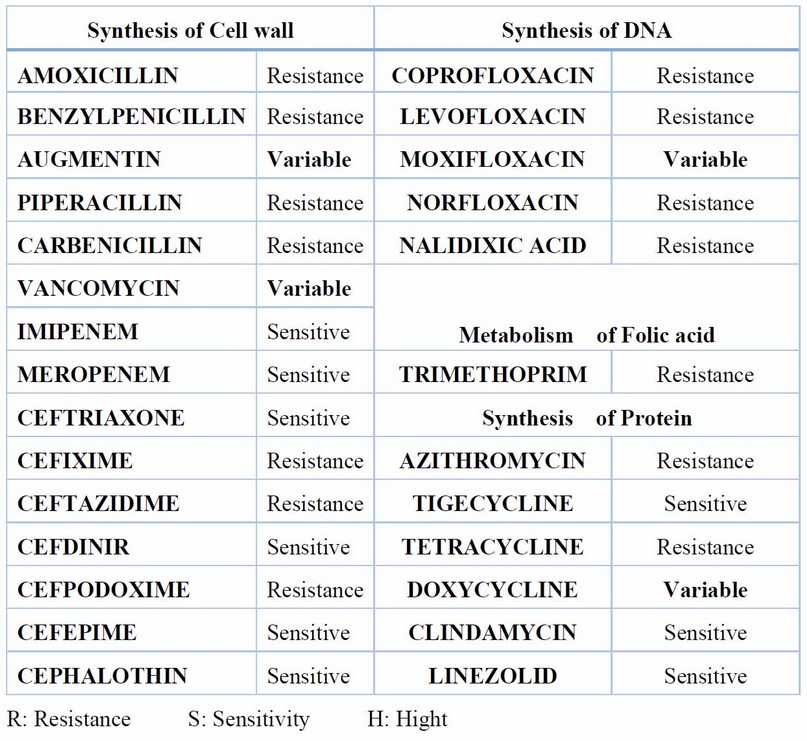
Table 5.Susceptibility test to Staphylococcus aureus isolated from otitis media
This study, which was conducted on isolates of Staphylococcus aureus isolated from otitis media, agrees with14,15 demonstrate Staphylococcus aureus isolates from tonsillitis to test for sensitivity and disagree with16 including high resistance to ceftriaxone and erythromycin, they were resistant to penicillin ( except for augmentin some isolates were sensitive) and trimethoprim and quinolone, in addition to the presence of some isolates that resistant to vancomycin. There is also a high resistance to the macrolide family( azithromycin), as shown in table (5).
Glycopeptides like vancomycin are bactericidal because they bind to the D-ala-D-ala terminus of the peptidoglycan precursor Lipid II and block peptidoglycan synthesis17. Vancomycin is effective against a wide spectrum of gram-positive infections because Gram-positive bacteria, such as S. aureus18, frequently retain the D-Ala-D-Ala terminus.
For example, in VRSA and enterococci, unique operons compose genetic regulatory systems that code for diverse antibiotic resistance factors, and six resistance patterns have been found (called "VanA through VanG"). When an organism develops resistance to vancomycin, it transforms the precursors of the cell wall dipeptides into molecules that have a lower affinity for the antibiotic, such as D-alanyl-D-lactate (for VanA, VanB, and VanD subtypes) and/or D-alanyl-D-serine (for the same subtypes) (VanC, VanE, and VanG). An operon on the Tn1546 genetic element that was isolated from a vancomycin-resistant Enterobacteriaceae (VRSA) strain is responsible for VRSA resistance. Co-infections with VRE have been found in every single case as of this writing19.
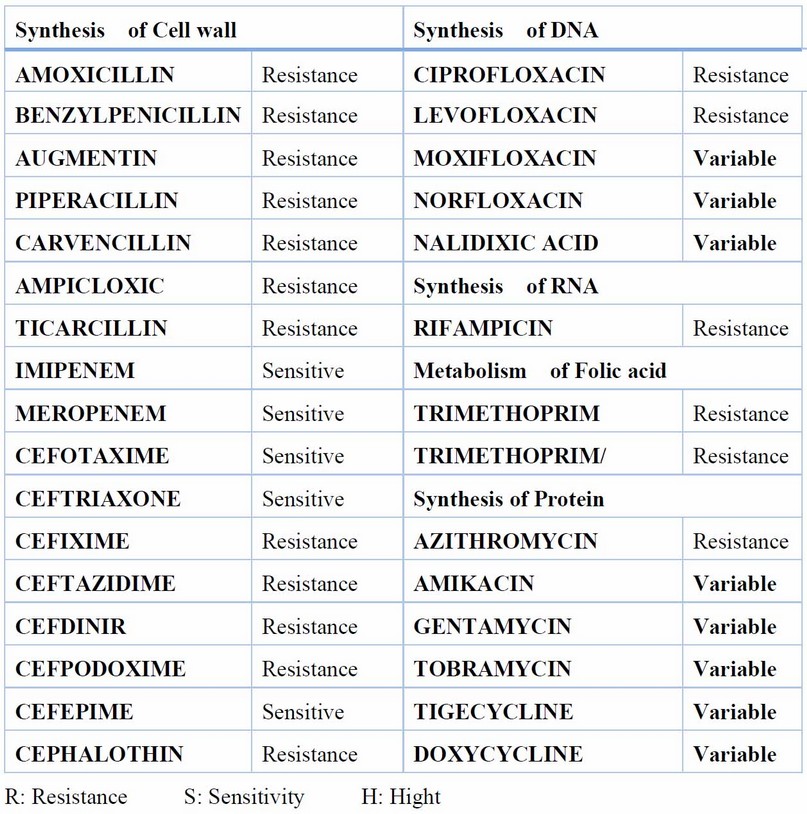
Table 6. Susceptibility test to Escherichia coli isolated from otitis media
As for the study that was conducted in the axis of sensitivity examination of Escherichia coli, it was shown that it was resistant and variable to the type of antibiotics used according to the above table. Although Ampicillin, Cefazolin, and Trimethoprim/Sulfamethoxazole are more resistant to E. coli than Meropenem, Imipenem, and some generations of cephalosporin, this is in agreement with19 that E. coli is highly sensitive to Amikacin, Tigecycline, Gentamycin, Ciprofloxacin, Levofloxacin, Nitrofurantoin, Imipenem, Meropenem.
Regarding the transmission of antibiotic-resistance genes, conjugation is generally considered the most likely mode of transmission because many of these genes are linked to plasmids or transposons. Bacterial plasmids have spread the ESBL and carbapenemase genes, which significantly impact human health, among other resistant genes. ESBL genes can be transferred from E. coli through conjugation, and this may explain why there is such a high prevalence of ESBL-producing E. coli found through excretion21.
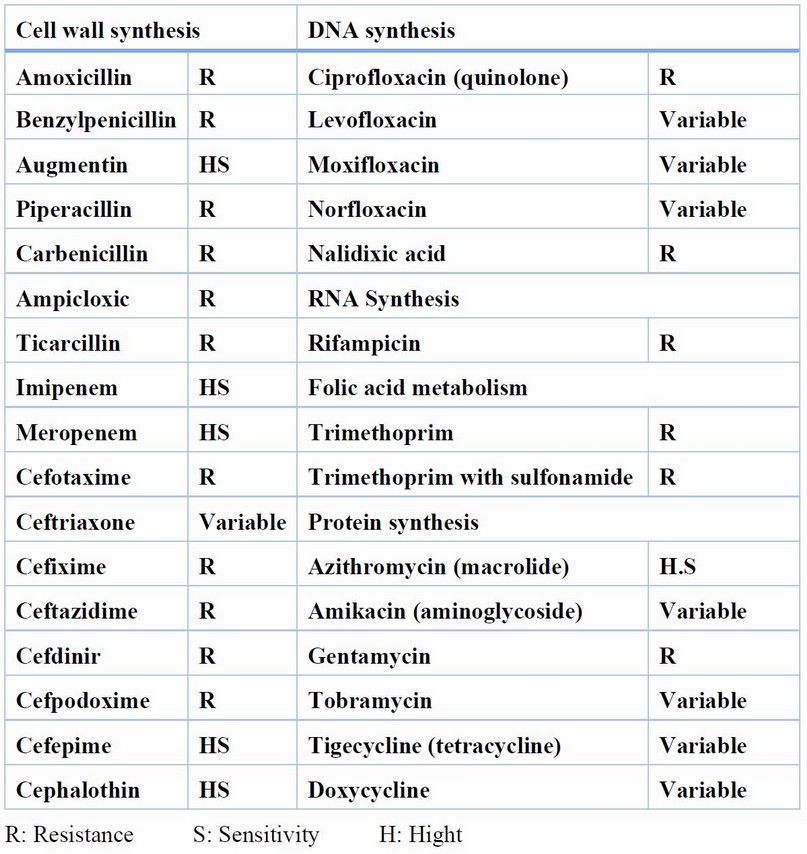
Table 7. Sensitivity test to Enterococcus fecalies isolated from otitis media.
Enterococcus fecalis isolated from ear infections were completely sensitive to augmentin, cefepime, cephalothin, meropenem, imipenem, and azithromycin. As shown in table (7), E. faecalis is frequently resistant to various antimicrobial medications, including aminoglycosides, aztreonam, and quinolones22. Numerous drug-resistance genes found on the chromosome or plasmid23 act as a conduit for the resistance.
CONCLUSIONS
Pseudomonas spp has a role in ear infections. In addition to the presence of bacteria Klebsiella spp, Proteus spp, S. aureus, E. coli and Enterococcus fecalies.The majority of the identified isolates were cephalosporin and penicillin-resistant. The existence of isolates of Proteus and Pseudomonas species that are meropenem-resistant. The presence of vancomycin-resistant Staphylococcus aureus isolates.
Author Contributions: “Conceptualization, E.J.B. and I.A.A.; methodology, E.J.B. and I.A.A.; software,E.J.B.; validation, A.M.N., I.A.A and I.A.A.; formal analysis, I.A.A.; investigation, E.J.B.; resources, L.H.A.. and I.A.A.; data curation, I.A.A and E.J.B.; writing—original draft preparation, E.J.B.; writ-ing—review and editing, E.J.B. and I.A.A.; visualization, I.A.A.; supervision, A.M.N.; project administration, I.A.A.; funding acquisition, L.H.A., I.A.A and AMN. All authors have read and agreed to the published version of the manuscript."
Funding: "This research received no external funding".
Informed Consent Statement: Not applicable
Acknowledgments: The authors would like to express thanks and appreciation to the presidency of the University of Alkafeel for the support in completing this research.
Conflicts of Interest: "The authors declare no conflict of interest."
REFERENCES
1- Maharjan, M. ; Bhandari,S. ; Singh,I. ; Mishra,S.C. Prevalence of otitis media in school going children in Eastern Nepal. Kathmandu Univ Med J. 2006 ;4(4): 479-82.
2- Spellberg,B. ; Guidos,R. ; Gilbert,D. ; Bradley,J. ; Boucher,HW. ; Scheld,WM. . The epidemic of antibiotic-resistant infections: a call to action for the medical community from the Infectious Diseases Society of America. Clin Infect Dis.2008; 46:155-64.
3- Benninger, MS. "Acute bacterial rhinosinusitis and otitis media: changes in pathogenicity following widespread use of pneumococcal conjugate vaccine". Otolaryngology–Head and Neck Surgery. March 2008, 138 (3): 274–8.
4- Lieberthal, AS. ; Carroll, AE. ; Chonmaitree, T. ; Ganiats, TG. ; Hoberman, A. ; Jackson,MA ."The diagnosis and management of acute otitis media". Pediatrics. March 2013;131 (3): e964-99.
5- Collee, JG; Fraser, A.G. ; Marmison, B.P. and Simpson, S.A.. Mackie and MaCartneys. Practical medical microbiology. (1996)14th ed. ChurchillLivingstone, U.K.
6- MacFaddin, J.F. Biochemical Tests for Identification of Medical Bacteria. 3rd edition. Lippincott Williams and Wilkins, (2000) USA.
7- Hansen, D.S; Jensen, A.G; Nørskov-Lauritsen, N; Skov, R and Bruun, B.. Direct identification and susceptibility testing of enteric bacilli from positive blood cultures using VITEK (GNI+/GNS-GA) Clin Microbiol Infect. 2002; 8:38–44.
8- Jain, P. and Varshney, R. Antimicrobial activity of aqueous and methanolic extracts of Withania somnifera (Ashwagandha). J Chem Pharm Res, 2011.3(3):260-263.
9- Hateet RR, Banoon SR, Mohammed MM. Isolation and Identification of Pathogenic Bacteria Causing Otitis Media in Misan Governorate. J Pure Appl Microbiol. 2022;16(2):1384-91.
10- Nagoba,BS. ; Selkar,SP. ; Wadher,BJ. ; Gandhi,RC. "Acetic acid treatment of pseudomonal wound infections--a review". Journal of Infection and Public Health. December 2013;6 (6): 410–5.
11- Yasin, Faizan ; Assad, Salman ; Talpur, Abdul Subhan ; Zahid, Mehr ; Malik, Shuja A "Combination Therapy for Multidrug-Resistant Klebsiella Pneumoniae Urinary Tract Infection". Cureus. 2017; 9 (7): e1503.
12- AL-Kraety, I. A. A., AL-MUHANNA, S. G. & BANOON, S. R. Molecular Exploring of Plasmid-mediated Ampc beta Lactamase Gene in Clinical Isolates of Proteus mirabilis. Revista Bionatura, 2021;6 (3).
13- Tsakris. Transmission in the community of clonal Proteus mirabilis carrying VIM-1 metallo-beta-lactamase. J. Antimicrob. Chemother. ,2007;60:136–139.
14- Almayali, E. J. B., AL-Kraety, I. A. A., & Al-Muhanna, A. S..GENOTYPIC AND PHENOTYPIC DETECTION OF BIOFILM PRODUCTION BY ICAA AND ICAD GENES IN STAPHYLOCOCCUS AUREUS ISOLATED FROM TONSILLITIS. Biochem. Cell. Arch. 2018; 18 (1): 1017-1021.
15- Almayali, E. J. B., & AL-Kraety, I. A. A. MOLECULAR DETECTION OF AAP GENE IN STAPHYLOCOCCUS AUREUS ISOLATED FROM TONSILLITIS. Plant Archives, 2019;19 (1) :1400-1402.
16- AL-MUAALA, Maki N. Molecular Detection of Clumping factor A gene and Antibiotic Susceptibility Evaluation of Staphylococcus Aureus Isolated from Urinary Tract Infections. Archives of Razi Institute, 2022 ;77(2): 573-578.
17- Blaskovich,MAT. ; Hansford,KA. ; Butler,MS. ; Jia, Z. ; Mark, AE. ; et al. Developments in glycopeptide antibiotics. ACS Infect Dis.2018; (4): 715-735.
18- Kim,SJ. ; Matsuoka,S. ; Patti,GJ. ; Schaefer,J. Vancomycin derivative with damaged D-Ala-D-Ala binding cleft binds to cross-linked peptidoglycan in the cell wall of Staphylococcus aureus. Biochemistry .2008; 47: 3822-3831.
19- Yang, W, ; Liu, J. ; Blažeković, B. ; Sun,Y. ; Ma, S. et al. In vitro antibacterial effects of tanreqing injection combined with vancomycin or linezolid against methicillin-resistant Staphylococcus aureus. BMC Complement Altern Med .2018;(18): 169.
20- AL-KRAETY, ISRAA ABDUL AMEER, et al. Bacterial vaginosis pattern and antibiotic susceptibility testing in female patients using high vaginal swabs. Biodiversitas Journal of Biological Diversity. 2022; 23(6).
21- Mario Galindo-Méndez . Antimicrobial resistance in <em>Escherichia coli</em>, E. Coli Infections - Importance of Early Diagnosis and Efficient Treatment, Luis Rodrigo, IntechOpen, (July 17 2020). DOI: 10.5772/intechopen.93115.
22- Singh, Harpreet ; Das, Satyajeet ; Yadav, Jyoti ; Srivastava, Vijay Kumar ; Jyoti, Anupam ; Kaushik, Sanket . "In search of novel protein drug targets for treatment of Enterococcus faecalis infections". Chemical Biology & Drug Design. Wiley. 2019-07-21;94 (4): 1721–1739.
23- Panthee, Suresh ; Paudel, Atmika ; Hamamoto, Hiroshi ; Ogasawara, Akihiko Ano ; Iwasa, Toshihiro ; Blom, Jochen ; Sekimizu, Kazuhisa. "Complete genome sequence and comparative genomic analysis of Enterococcus faecalis EF-2001, a probiotic bacterium". Genomics. March 23 2021; 113 (3): 1534–1542.
Received: January 15, 2023 / Accepted: February 25, 2023 / Published:15 March 2023
Citation: Almayali , E. J. B.; Lastname.; Al-Kraety, I.A.A; Naji , A.M. and Abd almunaam , L.H. Bacteriological study and its antibiotics susceptibility pattern of Otitis Media in Iraqi patients.
Revis Bionatura 2023;8 (1) 67. http://dx.doi.org/10.21931/RB/2023.08.01.67
